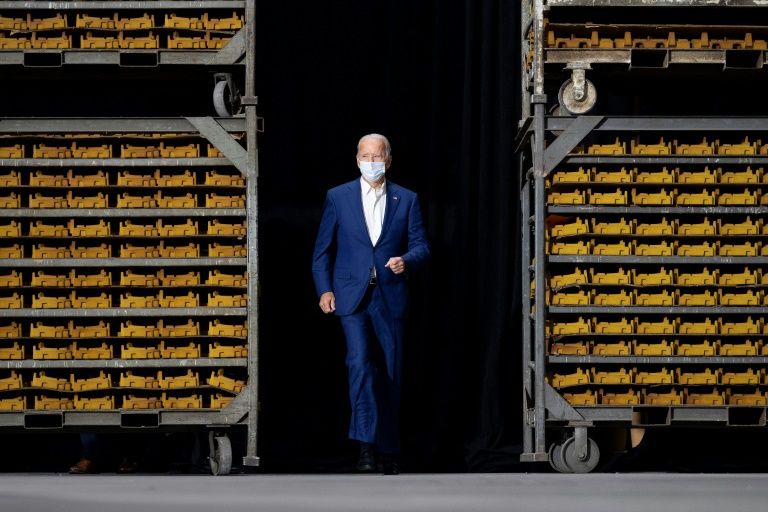US October manufacturing growth beats expectations: survey
Washington (AFP) – US manufacturing grew beyond expectations in October, as orders rose and employment began expanding again, according to an industry survey released Monday.
At 59.3 percent, the Institute for Supply Management’s (ISM) manufacturing index was the highest in more than two years.
The index also marked the sixth consecutive month of growth after plunging following the business shutdowns in March of to stop the coronavirus.
While new orders led the growth with a 7.7 point increase to 67.9 percent, employment crossed the 50-percent threshold indicating expansion for the first time since July 2019 with a reading of 53.2 percent.
Inventories also passed the key figure, climbing 4.8 points to 51.9 percent, ISM said.
But customers’ inventories contracted slightly to 36.7 percent, its lowest level in more than a decade which is “considered a positive for future production,” the survey’s chair Timothy R. Fiore said.
“Manufacturing performed well for the third straight month, with demand, consumption and inputs registering growth indicative of a normal expansion cycle,” Fiore said.
“While certain industry sectors are experiencing difficulties that will continue in the near term, the overall manufacturing community continues to exceed expectations.”
Of industries surveyed, 15 reported growth, while textile mills and printing and related support activities reported contraction.
“Business levels have just about returned to pre-COVID-19 levels. Our company is remaining conservative with fixed-cost spending, knowing the uncertainties that lie ahead with Covid-19 and its potential impact globally,” a miscellaneous manufacturing company told the survey.
However Oren Klachkin of Oxford Economics warned that the sector’s growth could be eroded amid a resurgence of coronavirus infections across the United States as well as Washington’s failure to approve another spending package that would support the economy’s recovery.
“Looking ahead, we expect manufacturing’s recovery to shift into a lower gear, constrained by the virus’s recent resurgence and less generous fiscal support,” he said.
“Softening demand, enduring supply chain disruptions, weaker energy activity and heightened uncertainty will depress activity and keep risks heavily tilted to the downside.”
Disclaimer: Validity of the above story is for 7 Days from original date of publishing. Source: AFP.


